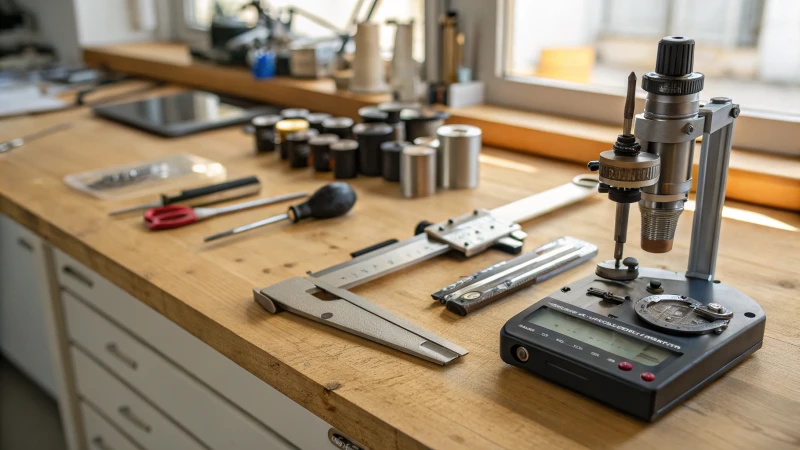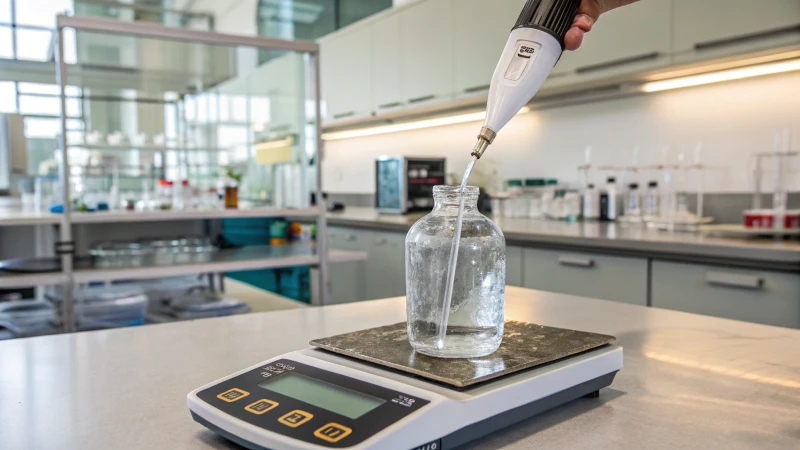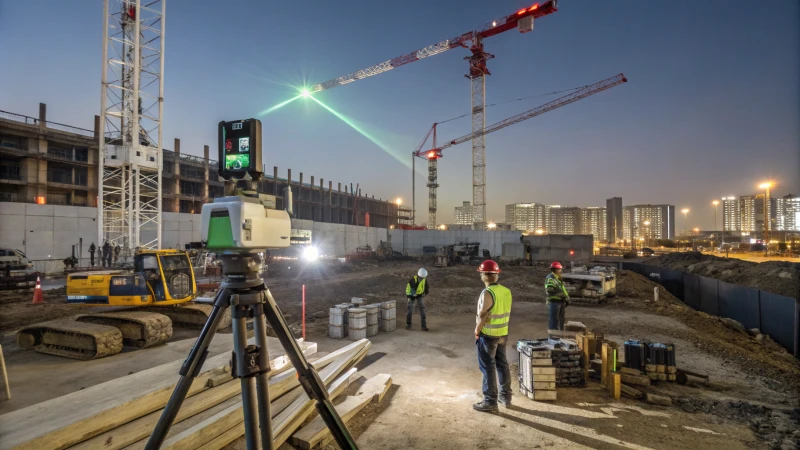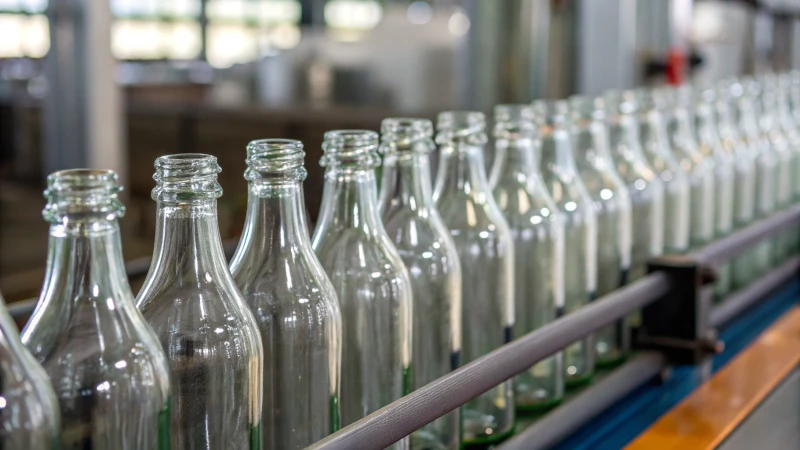
Have you ever wondered how glass bottles get their precise shapes?
To check glass bottle dimensions, I rely on tools like vernier calipers, micrometer screws, and more advanced tech such as coordinate measuring machines (CMM), laser scanning, and optical systems. Each of these tools has its strengths, offering a balance between accuracy and speed.
While I use basic tools like calipers for manual precision, automated systems like CMMs and laser scanners revolutionize the process, especially for complex designs. It’s like having a tech-savvy friend who helps ensure every bottle meets the exact specifications needed for quality assurance.
Vernier calipers are used for measuring glass bottle dimensions.Wahr
Vernier calipers provide precision in measuring glass bottle dimensions.
Coordinate measuring machines are slower than vernier calipers.Wahr
CMMs offer higher precision but are generally slower than manual tools.
How do temperature changes affect glass bottle dimensions?
Ever noticed how a glass bottle feels different on a hot summer day versus a chilly winter evening? It’s all about how temperature changes can subtly alter their dimensions.
Temperature changes cause glass bottles to expand or contract due to thermal expansion. This can lead to dimensional changes that affect product fit, sealing, and stability.

Understanding Thermal Expansion in Glass
Imagine you’re sipping your favorite drink from a glass bottle on a sun-drenched beach. That warmth you’re feeling isn’t just on your skin; it’s affecting the bottle too. Glass, like many materials, expands when heated and contracts when cooled—a phenomenon known as thermal expansion1. When temperatures rise, glass molecules spread out, causing the bottle to expand. On cooler days, those molecules huddle closer, leading to contraction.
| Temperature | Effect on Glass |
|---|---|
| Increase | Expansion |
| Decrease | Contraction |
The coefficient of thermal expansion (CTE) tells us just how much a glass bottle will stretch or shrink as temperatures change.
Impact on Manufacturing Processes
In my experience running a cosmetic packaging business, I’ve seen firsthand how crucial it is to keep an eye on temperature during production. Even slight variations can make a difference. For instance, if cooling isn’t consistent, bottles might contract unevenly, leading to defects like crooked shapes or ill-fitting tops.
Real-world Implications for Consumers
Have you ever struggled with a bottle cap that just wouldn’t fit right? It might be due to these temperature-induced dimensional shifts. A bottle that swells might struggle with its cap, potentially causing leaks. On the flip side, a contracted bottle might not hold as much liquid as intended.
Temperature changes during shipping and storage can make these issues worse, especially for products sensitive to such shifts.
Mitigating Dimensional Changes
To tackle these challenges, I’ve found manufacturers employ several savvy strategies:
- Temperature Control Systems: Keeping production temps stable helps curb expansion and contraction issues.
- Material Selection: Opting for glass with a low CTE can minimize size changes.
- Real-time Monitoring: With tools like laser scanning systems2, we can keep tabs on bottle dimensions during production and make quick fixes.
These measures are key to ensuring our products remain reliable and satisfactory for consumers like you.
Glass expands when heated and contracts when cooled.Wahr
Glass molecules move apart with heat, causing expansion; they contract when cooled.
Temperature changes have no effect on glass bottle dimensions.Falsch
Thermal expansion causes dimensional changes in glass bottles with temperature shifts.
Why Use Laser Scanning Systems?
Imagine a tool that captures every intricate detail of your project effortlessly. Laser scanning systems do just that, revolutionizing how we measure and design.
Laser scanning systems are game-changers in many industries, offering unmatched accuracy, speed, and non-contact measurement. These systems capture detailed 3D images swiftly, making them perfect for handling complex shapes and large-scale projects, thus enhancing precision and streamlining workflows.

High Precision and Accuracy
You know that feeling when you finally find a tool that does the job better than anything else you’ve tried? That’s how I felt about laser scanning systems. Their ability to capture the tiniest details with millimeter-level precision is nothing short of amazing. In construction, for instance, even a small error can lead to major problems, so having a tool this accurate is a game-changer.
Speed and Efficiency
Time is money, as they say, and laser scanners really help save both. I remember working on a surveying project where we needed data from a huge area. Traditionally, this would have taken forever. But with a laser scanner, it was like waving a magic wand over the landscape. The speed was incredible, and the comprehensive data we got back made everything run smoother and faster—ultimately saving us money.
Non-Contact Measurement
If you’ve ever tried measuring something fragile or irreplaceable, you know how nerve-wracking it can be. Laser scanners take away that anxiety because they don’t need to touch the object. In archaeology, for example, this is invaluable—artifacts remain untouched while you get all the data you need.
Versatility Across Industries
What’s truly impressive about laser scanning is its versatility. It’s not just for construction or archaeology. Whether it’s checking part alignment in automotive manufacturing, crafting bespoke prosthetics in medicine, or piecing together crime scenes in forensics, these systems are indispensable tools for diverse applications3.
Integration with Digital Tools
One of the things I love about laser scanning is how well it plays with other digital tools. It seamlessly integrates with CAD software, which means you can move from physical measurements to digital models without any hassle. This capability enhances design and analysis4 workflows across engineering and design fields.
| Industrie | Application | Benefits |
|---|---|---|
| Construction | Structural analysis | High precision |
| Archaeology | Artifact preservation | Non-contact measurement |
| Automotive | Part alignment checks | Increased efficiency |
| Medicine | Prosthetic development | Digital integration |
| Forensics | Crime scene recreation | Detailed 3D imaging |
Leveraging laser scanning technology has allowed industries, including mine, to enhance operational efficiencies, minimize errors, and improve accuracy. By understanding these benefits, you can make informed decisions on choosing the right solutions for your needs.
Laser scanning systems ensure millimeter-level precision.Wahr
Laser scanners capture minute details, ensuring high accuracy.
Laser scanning is only used in construction industries.Falsch
It's used in diverse fields like medicine and archaeology.
How Do I Ensure Consistent Wall Thickness in Glass Bottles?
Remember the first time you popped a bottle of your favorite drink, and it was just perfect? There’s a secret to that perfection: consistent wall thickness in glass bottles.
Achieving consistent wall thickness in glass bottles involves using precise mold designs, maintaining strict temperature control, and employing advanced measurement techniques like ultrasonic testing and laser scanning.

Importance of Consistent Wall Thickness
I remember when I first ventured into the world of cosmetic packaging; it was all about learning the ropes and the technicalities that ensure top-notch quality. Ensuring consistent wall thickness is like building a strong foundation—it enhances structural integrity and minimizes breakage risks during transportation5. You wouldn’t believe how a simple variation can lead to weak points, compromising the bottle’s durability. A uniform thickness also ensures proper sealing, keeping precious contents safe from leaks.
Advanced Measurement Techniques
Back in the early days of my career, I was amazed by the precision technology could bring. Tools like ultrasonic testing and laser scanning were game-changers. Ultrasonic sensors, for instance, detect variations in wall thickness in real time, offering a level of precision that manual checks just can’t match. And those laser scanners? They create these incredibly detailed 3D models, helping us analyze even the most complex shapes thoroughly.
Table: Measurement Tools Comparison
| Tool | Precision Level | Best For |
|---|---|---|
| Vernier Caliper | Medium | Small batches, manual checks |
| Micrometer Screw | High | High-precision needs |
| Coordinate Measuring | Very High | Large-scale production |
| Laser Scanning System | Extremely High | Complex shapes, precision |
| Optical Measurement | High | Fast production lines |
Mold Design and Manufacturing Process Control
Let me tell you about the time I realized the true importance of mold design. It was during a particularly challenging project that I understood an optimally designed mold could mean the difference between success and failure. Such a mold ensures even distribution of glass material during manufacturing. Couple this with controlling variables like temperature and cooling speed, and you’re on your way to preventing those pesky material inconsistencies.
Real-Time Monitoring Systems
Implementing real-time monitoring systems was another milestone in my journey. They allow us to detect deviations in thickness early on, which is crucial for immediate adjustments. With IoT sensors and cloud-based analytics, continuous feedback becomes possible, enabling proactive quality control6.
Addressing Common Sources of Error
The learning curve involved understanding how fluctuations in temperature and cooling speed could lead to uneven thickness. Stabilizing the production environment was key. Automated systems became my go-to solution to maintain consistent conditions, reducing human error significantly.
Segment Detection for Critical Areas
In my experience, certain areas like bottlenecks and bottoms are especially prone to thickness variations. Segment detection with ultrasonic sensors became essential for ensuring these critical parts met our desired standards. Coordinate measuring machines (CMM) offered detailed local measurements, identifying potential weak points early on.
Impact of Material Choice
Choosing the right glass material impacts wall thickness consistency. It’s fascinating how environmentally friendly materials can reduce energy consumption while maintaining dimensional accuracy. Exploring different glass compositions might even yield better results in lightweight designs7.
Addressing Global Standardization Challenges
Standardization across markets was a challenge I faced as my business expanded internationally. Adhering to international standards helped avoid discrepancies in bottle sizes across regions. Offering customized sizing solutions ensured compliance with diverse market demands.
By focusing on these aspects, I’ve seen firsthand how manufacturers can achieve consistent wall thickness in glass bottles, ensuring product quality and customer satisfaction without compromising on design or efficiency.
Ensure that your equipment is updated to the latest technology for optimal results.
Ultrasonic testing ensures precise wall thickness in glass bottles.Wahr
Ultrasonic sensors detect variations in real time, ensuring precision.
Vernier calipers provide the highest precision for large-scale production.Falsch
Coordinate measuring machines offer higher precision for large-scale needs.
Why is international standardization important for glass bottle sizes?
Ever wonder why your favorite perfume or essential oil bottle looks the same, no matter where you buy it?
International standardization of glass bottle sizes is crucial because it ensures compatibility across global markets, simplifies production, and reduces waste. This process supports seamless trade and compliance, benefiting manufacturers and consumers worldwide.

Global Market Compatibility
Imagine the frustration of ordering a batch of glass bottles from overseas, only to find out that the caps you have don’t fit. Been there, done that! Standardizing bottle sizes eliminates this headache. It’s like having a universal language for packaging, making it easy for companies like mine to maintain consistency across different markets. Just picture a standard bottleneck size that streamlines the manufacturing of caps—pure bliss for our production lines.
Simplified Manufacturing Processes
I once spent hours recalibrating machines for different bottle sizes—time that could’ve been spent on more creative endeavors. Standardization changes that game entirely. By sticking to one set of specifications, I can optimize production lines, cut down on costs, and reduce errors. Think of it as a dance where everyone knows the steps—fluid and efficient.
Environmental Impact Reduction
Let’s talk about saving the planet, one bottle at a time. Standardized sizes mean fewer variations and less waste. I’ve seen firsthand how this reduces overproduction and streamlines recycling processes. It’s not just good business; it’s a step towards sustainability.
| Aspect | Benefit of Standardization |
|---|---|
| Compatibility | Ensures seamless integration in various markets |
| Efficiency | Streamlines production and reduces costs |
| Sustainability | Lowers waste and improves recycling efforts |
Trade and Regulatory Compliance
Navigating international trade regulations is like trying to read a novel in a language you barely understand. However, when products meet global standards, compliance becomes less of a hurdle. I’ve found this particularly beneficial when entering new markets without the fear of excessive modifications.
Market Competitiveness
Consistency isn’t just about looking good; it’s about building trust. When our products look the same no matter where they’re sold, it builds brand reliability. It’s reassuring for consumers and allows us to focus on what truly matters—innovation and quality. Sticking to standardized sizes positions us as leaders in quality and reliability, making us the go-to choice for customers worldwide.
Exploring international standardization in greater depth reveals its profound impact on various aspects of the glass packaging industry. It’s not just about uniformity; it’s about creating a more interconnected, efficient, and sustainable global market.
Standard bottle sizes simplify manufacturing.Wahr
Standard sizes reduce complexity, leading to cost savings and efficiency.
Different markets require unique bottle sizes.Falsch
Standardization ensures compatibility across markets, not unique sizes.
Schlussfolgerung
Inspection tools for glass bottle dimensions include vernier calipers, micrometers, CMMs, laser scanners, and optical systems, each ensuring precision and efficiency in quality control.
-
Understanding thermal expansion helps in comprehending how temperature impacts glass dimensions. ↩
-
Laser scanning systems offer precise monitoring solutions to mitigate dimensional issues. ↩
-
Discover how laser scanning technology is used across different fields, highlighting its versatility and adaptability. ↩
-
Learn about the seamless transition from physical measurements to digital models using CAD integration. ↩
-
Learn how consistent wall thickness reduces transportation risks by enhancing structural integrity. ↩
-
Explore how real-time systems can enhance quality control in production lines. ↩
-
Find out how choosing the right materials supports energy-efficient production. ↩

